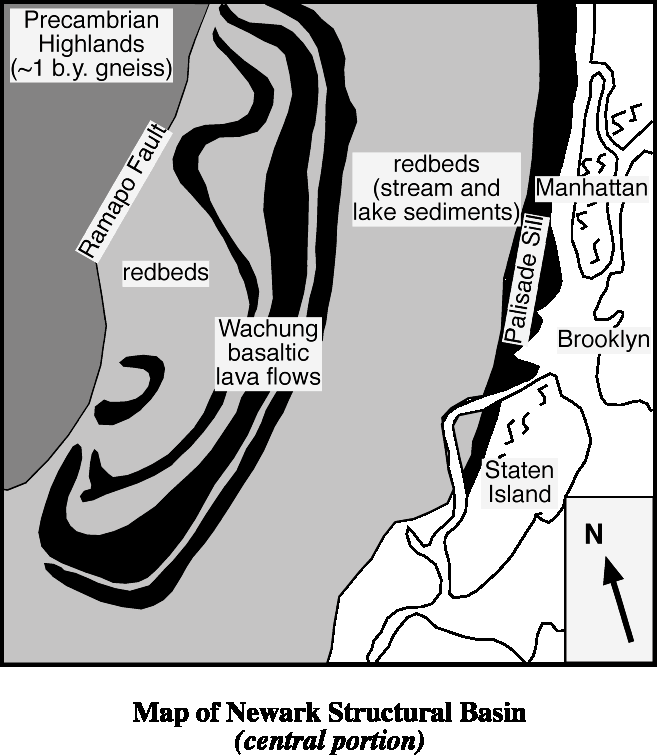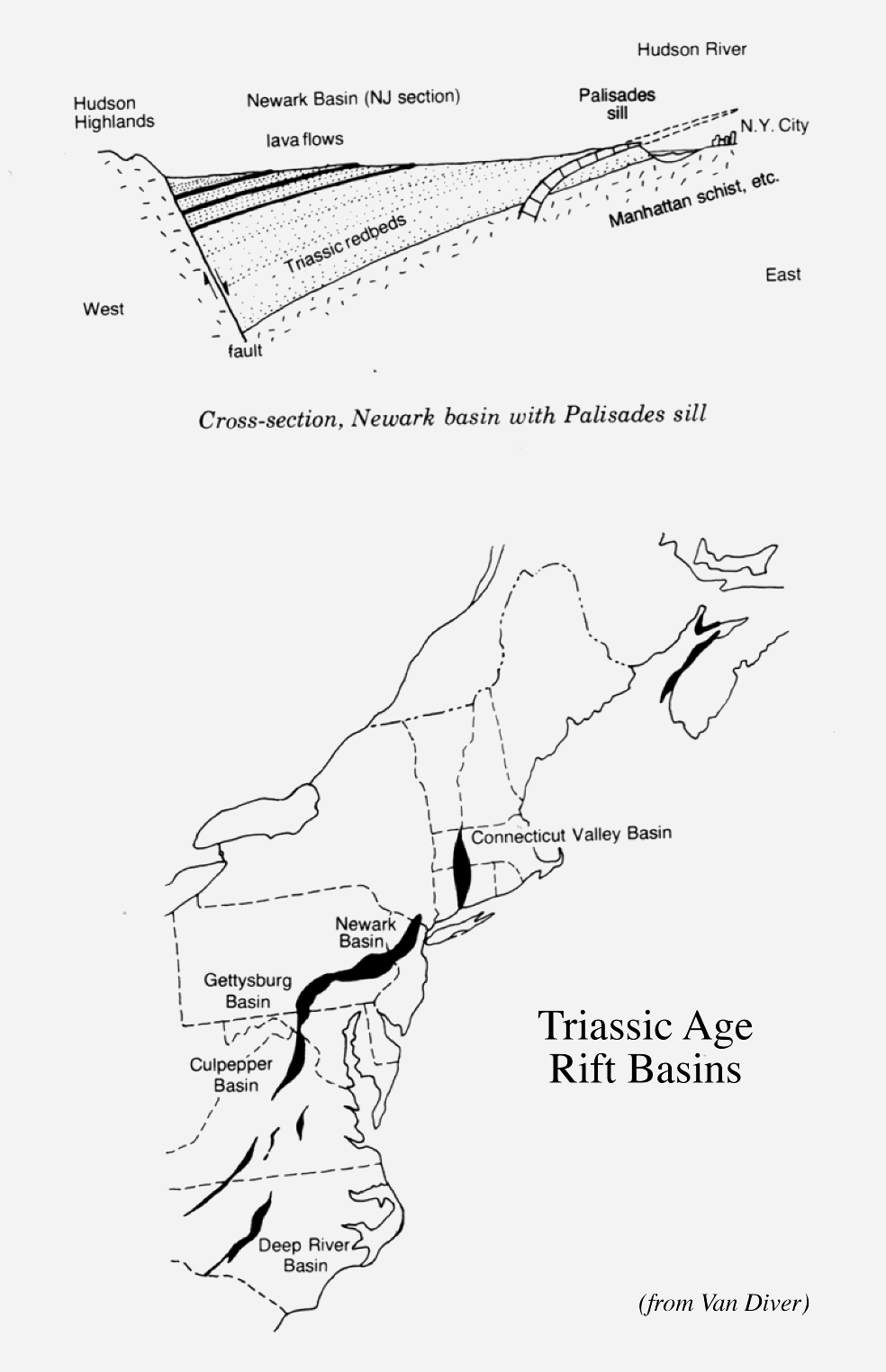

The Newark Structural Basin
The Newark structural basin formed between 225 to 185 million years ago as one of a number of rift basins as the supercontinent Pangea was stretching in preparation for the separation of North America from Africa. The Newark basin is a large half-graben in which the subsiding hanging wall block has rotated downward toward the west-northwest along the major border fault, the Ramapo Fault. To the west of the Ramapo fault are circa 1 b.y. old gneisses uplifted in the footwall block.
As the hanging wall block subsided, it formed a low-lying basin that collected sediments. Coarse sediments shed from the rising footwall collected at the margin of the basin as coarse "fanglomerates." Stream and lake deposits of sands and muds collected in the basin and formed red and gray sandstones and shales. As crustal stretching and thinning continued, basaltic magma rose and erupted in three separate volcanic episodes, each producing a thick layer of volcanic rock. The layers of basalt are separated from one another by the continuing deposits of red sandstones and shales. One of the intrusions of magma spread between some of the earlier formed layers of sedimentary rock to form the Palisade Sill.
Since the layers of sedimentary and igneous rock are all tilted toward the west, most of the layers are exposed in north-south belts. The essentially non-porous basalts of the Wachung lava flows and Palisade Sill are more resistant to weathering than the porous sandstones and shales. So the lava flows form long linear ridges, the three Wachung Mountains, and the Palisade Sill forms a high ridge on the west side of the Hudson River. The sedimentary layers form lowlands and valleys between the sill, the lava flows and the resistant gneisses of the highlands beyond the Ramapo Fault.

